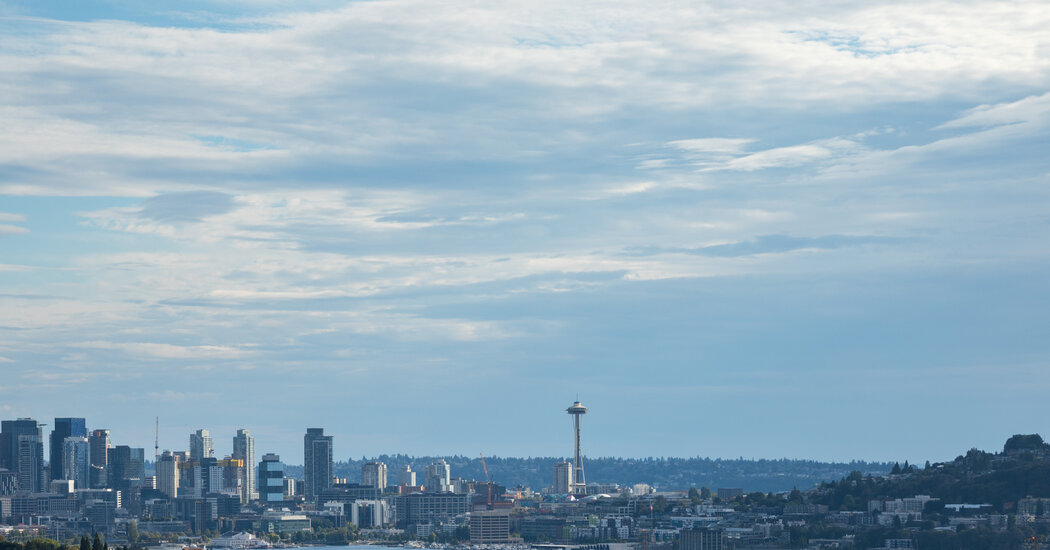9 a.m. Visit a giant troll in the woods
Sundays often scream “day trip,” and Seattle is fortunate enough, within its city limits, to have an easily accessible peninsula that feels hours away even though it’s only a short drive (or water taxi trip) from downtown. West Seattle is blessed with a sandy shore at Alki Beach Park, a laid-back vibe and the majestic Lincoln Park, a sprawling, wooded public area overlooking Puget Sound that offers something for everyone — forest trails, ball fields, playgrounds, picnic shelters near a rocky beach and a giant troll named Bruun Idun, who arrived in 2023. The wooden sculpture, near the public, saltwater Colman Pool, is one of five trolls in the Greater Seattle area designed by the Danish artist Thomas Dambo to celebrate both Scandinavian and Native American traditions.
10 a.m. Take it (over) easy at a record-store diner
Don’t be surprised if you catch Eddie Vedder, the lead singer of Pearl Jam and a West Seattleite, sifting through an ample collection of LPs at Easy Street Records, a record shop and affordable diner, operating since 1988 in the Alaska Junction, West Seattle’s central commercial district. Once you’ve found your treasures, order the Horton Heat Hash (corned beef, bacon, onions, peppers, hash browns, eggs, toast, $15) or the Dolly Parton Stack (two pancakes, two strips of bacon, two eggs, $12). For diners who prefer chicken shawarma ($14) to chicken-fried steak, Falafel Salam has graduated from West Seattle’s farmers’ market to a brick-and-mortar space on California Avenue (opens at 11 a.m.).
12 p.m. Acknowledge Seattle’s roots
As you make your way through West Seattle, look for Desmond Hansen’s painted traffic signal boxes, which feature portraits of noteworthy Seattleites like the martial-arts star Bruce Lee and the musicians Ray Charles, Chris Cornell, Ann and Nancy Wilson of Heart, and Jimi Hendrix. Learn the story of some of Seattle’s original inhabitants, the Duwamish Tribe, who signed a treaty in 1855 granting the United States government 54,000 acres in exchange for health care, education, fishing rights and land. That treaty has never been properly honored, but the tribe has persevered, opening up the Duwamish Longhouse and Cultural Center, a cedar structure near the Duwamish River, in which visitors are exposed to the tribe’s moving history and can learn of various ways to support its efforts today (free admission).







